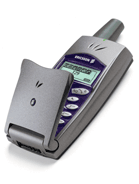How a century of telephone expertise doomed Ericsson
The
mobile phone industry is used to vendors flaming out, sometimes just a couple
of years after company’s peak. Yet few handset companies have self-destructed
as spectacularly as Ericsson — particularly considering its pedigree in
telephony. I have worked with the Swedes for I would say a majority of my
career life if I have nay and I bet you they are brilliant when it comes to
technology. One of the reason I have been an SE fan boy for such a long time is
due to the fact that a combination Sony and Ericsson was just out of this
world.
During
the summer of 1997, Ericsson spent
a few months as the No.1 mobile phone brand in the world, buoyed by the early
success of its brand new miniature phone called the 788. Ericsson’s global
market share briefly spiked to 27% around the same time Motorola’s long decline finally cost the company
its global leadership position. Nokia was rapidly gaining ground, but had not
yet pulled decisively ahead of its two main rivals.
For
a brief moment, it looked like Ericsson might be able to retain its position as
the world’s No.1 mobile phone brand. Yet just four years later, Ericsson was
forced into a merger with Sony’s handset unit.
How
can a company that became a leading landline telephone brand in 1890’s fumble
its golden chance of dominating the mobile handset market so badly? The answer
is most likely very simple: a long and successful history in a specific
industry can fatally handicap a manufacturer when a device or a product morphs
into a radically new form. In Ericsson’s case, the company was able to make the
leap from landline phones to analog mobile phones in 1980s — and then to
digital mobile phones in 1990s — but it was unable to comprehend how the mobile
phone started evolving rapidly from a voice device into a data device. As we
say in Kenya “This is where the rain begun beating them”.
LM
Ericsson started out as the Huawei of 1880s (reminds you of your cheap idios
huh?). Its crafty Swedish founder, Lars Magnus Ericsson, reverse engineered
Siemens telephones and started manufacturing sleeker versions that undercut
Siemens and Bell on pricing. It’s worth noting that the Ericsson phones were
not particularly innovative even back in 1890s. They were simply better
engineered and designed versions of the leading models. You could argue that
Ericsson’s corporate philosophy started hardening around the concept of
engineering improved versions of existing models rather than pioneering new
functionality a hundred years ago.
Geographically,
Ericsson was unusually adventurous for a Scandinavian company; it became a
leading telecom vendor in Brazil during 1890s. Gustaf Öberg oversaw Ericsson’s
successful expansion in China, including the break-through network contract in
Guangzhou in 1913. The early push into Latin America and Asia meant that
Ericsson was perfectly positioned for the mobile telephony revolution of the
1980s.
Ericsson’s
strategy of classy copy-catting was particularly well-suited for competing
against Motorola, a company that grabbed an early lead in mobile handset market.
Motorola pioneered the analog mobile phone market and grabbed more than 60% of
the global market, but was notorious for bad ergonomic design and clunky user
interfaces.
Ericsson
made hay during the 1990s by essentially repeating its 1880s strategy. Instead
of reverse engineering Siemens, Ericsson used Motorola handsets as a template
for creating more sophisticated devices.
This
worked like a charm until it stopped working. The turning point was the year
1997, when Nokia began
rolling out a massive range of new devices in the 6100 and 5100 series. As odd
as it now sounds, Nokia played the role of Apple back
then — an aggressive, creative disruptor. Nokia’s market research team had
realized that text-messaging, games and calendar functionality were about to
revolutionize the mobile handset market. Consumers would start using their
phones as data devices, not just conduits for voice.
Nokia’s
sleek 1997 cell phone models introduced a shockingly large, five-line
monochrome display, which made reading text-messages easy and enabled playing
popular games like “Snake.” In addition, Nokia moved to using internal antennas
in its models just one year later.
And
Ericsson? Ericsson was busy copying and subtly improving Motorola designs. The
most notable Ericsson model in the year 1997 was the 788. It received a
rapturous welcome when it debuted and clearly improved on many aspects of
Motorola models of the time. It was notably light at 135 grams, as well as slim
at 24 millimeters. Yet it was soon clear that the 788 and its siblings were
rapidly becoming obsolete.
They
featured stubby external antennas and one-line displays, which were suddenly
looking ancient. Worst of all, their UI technology was a mess. Text-messaging
was not featured prominently and the tiny screens made using SMS or calendar
functionality downright painful.
The
788 sold like hotcakes for several quarters, and then turned cold as ice. Used
to the three- to five-year handset product cycle of the 1990s, Ericsson was
unable to push out truly novel product designs for the rest of the decade. The
788 was the peak of Ericsson’s 120-year history of manufacturing phones — and
it was also the phone that sunk Ericsson as a popular consumer brand.
A
century of telephone manufacturing expertise had given Ericsson a vast distribution
network and great brand awareness stretching from Brazil to China. But those
advantages counted for nothing when the company’s R&D program missed the
transformation of the mobile phone from a voice-centric device to a vessel for
data delivery.
Less
than five years after Ericsson’s global market share had briefly topped 25% and
its flagship model 788 had been a short-lived sensation, the company was forced
to merge its mobile phone operations with Sony. The resulting joint venture
limped along for a decade before being absorbed
by Sony.
Still
as a fan that has been taken to Sony as a brand and which I do agree is solid.
History seems to repeat itself in this aspect where by Sony seems to be getting
the market penetration strategy all wrong. We all know that Sony is a brand to
reckon with and that should be there message in the marketing ads that they run
all over the world. What I mean is that Sony should remind the consumer of its
might and capability especially in the emerging markets such as Africa which
are the new frontiers. Since the launch of the 2012 NXT phones has been as sluggish
as it was in the joint venture when it comes to market penetration strategy and
brand awareness. If compared to Samsung then I will say that what Sony is doing
is all child’s play and this is with all my critics as a fan boy.
It
is obvious that the emerging markets do not have enough purchasing power but
then again how come your other segment of electronics is doing so well? I know
of people who are die hard Sony fans but they are not aware of a Sony Xperia but
will so buy into it if properly informed and not with the kind out of this
world competitions and commercials like the ones running in the UK now we grown
folks buy phones not the children who watch silly bots (pardon me on that).
Four
months down the road and not much is to be shown despite the fact that Sony has
launched a few mid-range phones that could be suited for this market. The all
of a sudden large portfolio was the undoing of Sony Ericsson but could be forgiven
for a market penetration strategy but how do you achieve that without having
phone ranges cannibalizing on each other? I am sure we will see more than three
phones launching before the end of the year hence bringing in more confusion
just as it was with the SE Xperia range. Well the saga continues but as far as
it is right now, it is a Samsung and iPhone world and Sony is the clown. What
are your views?
Via BGR



been a die hard s/e since the t610,t630,k750,w810,the elm and now am on the experia ray.i guess pricw fluctuations with s/e's killed them off since they had no resell values.thats what affects the numbers the most in emerging markets.
ReplyDeleteIts sad that Sony has gone ahead to do what was there undoing was in the the JV. The issue of resale value should never occur if the product range is solid and lean which ain't the case right now. Proper marketing also helps in the product perception in the long run. How many fans will keep falling off?
DeleteThanks greeat blog
ReplyDelete